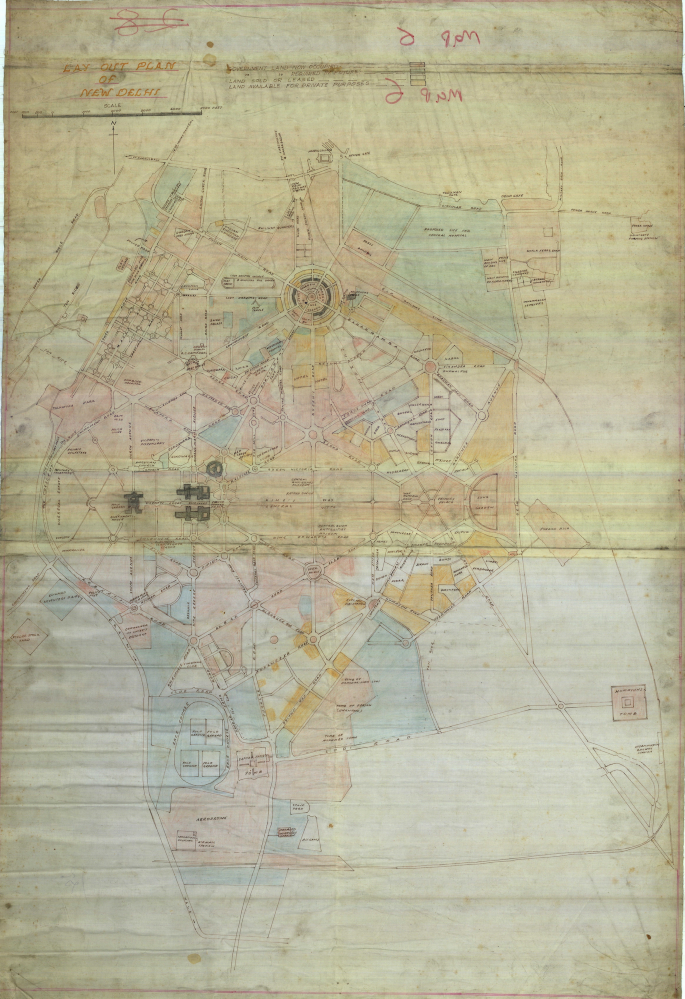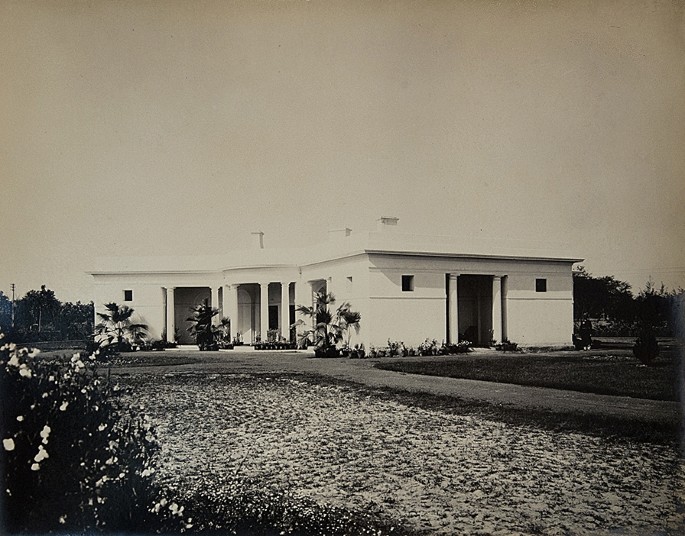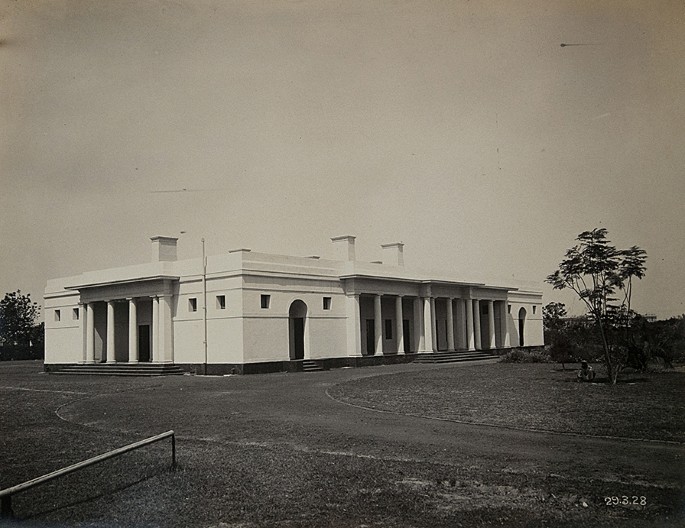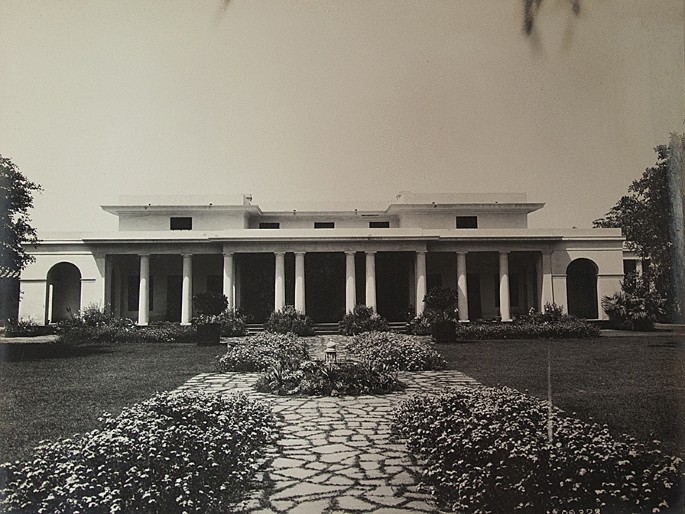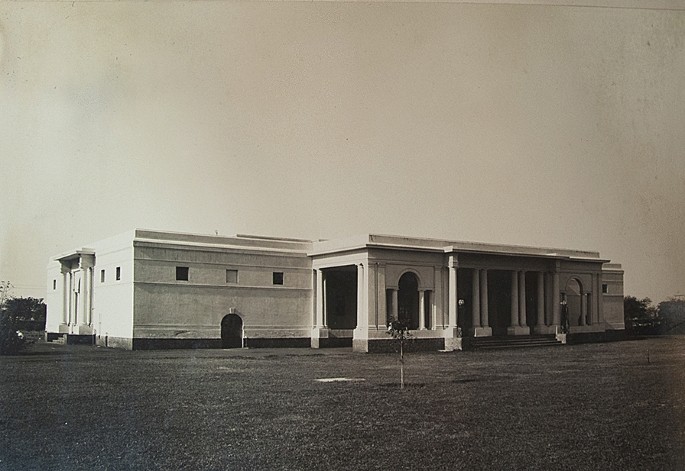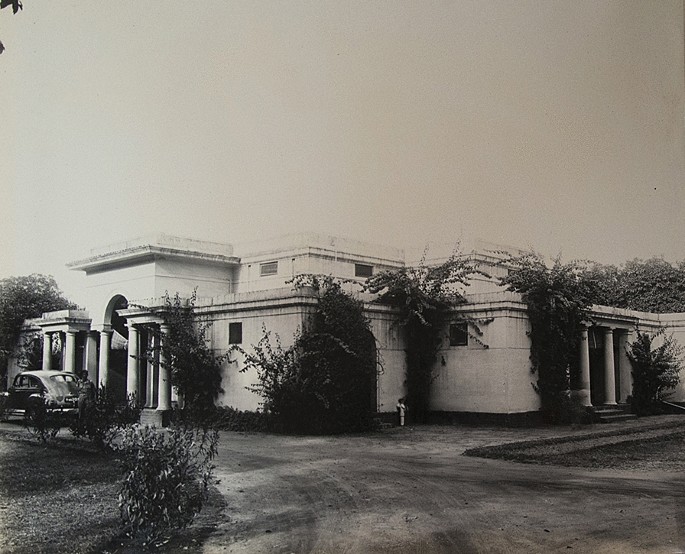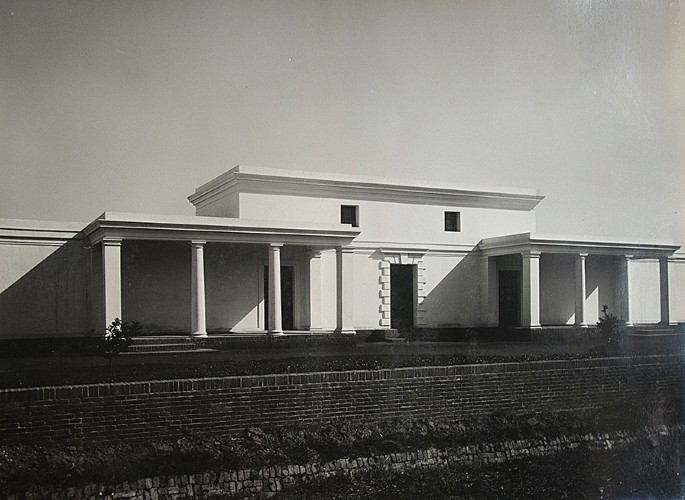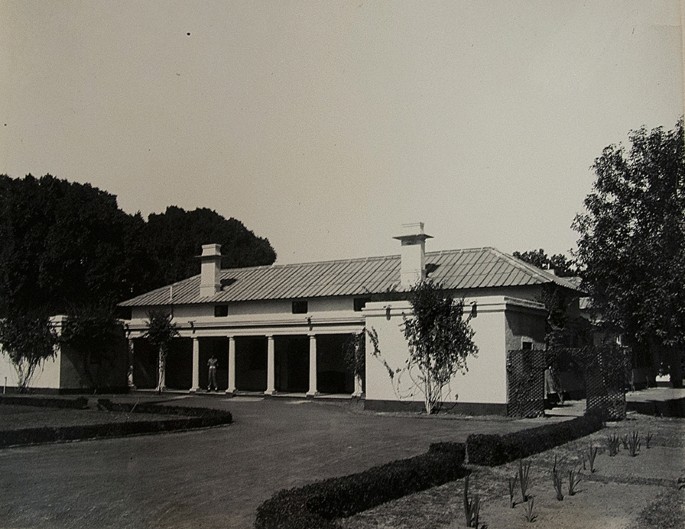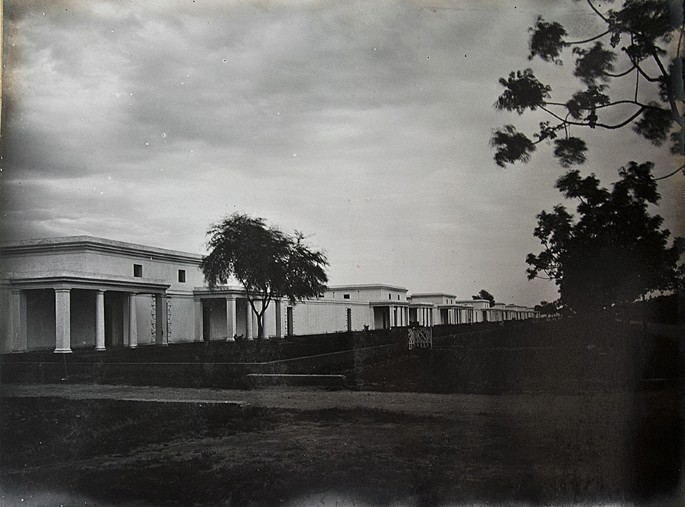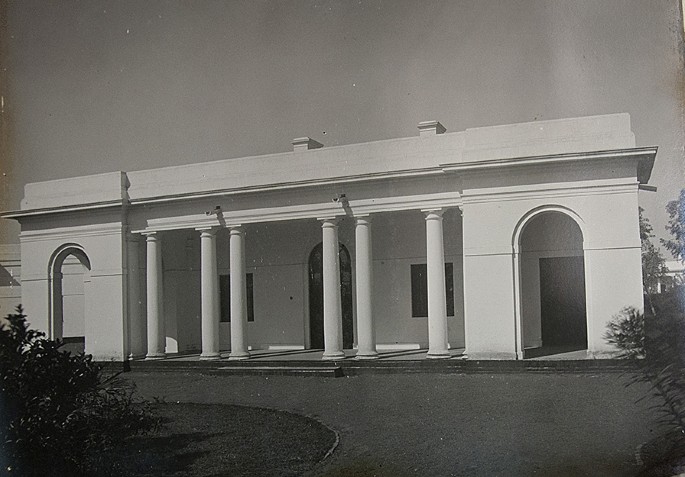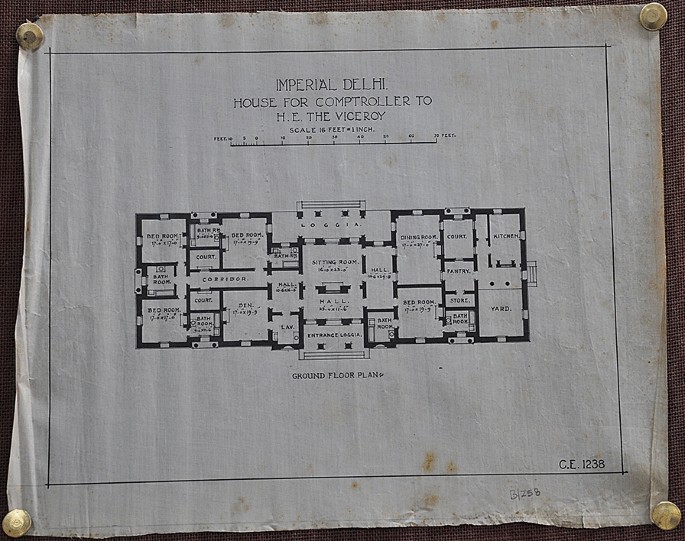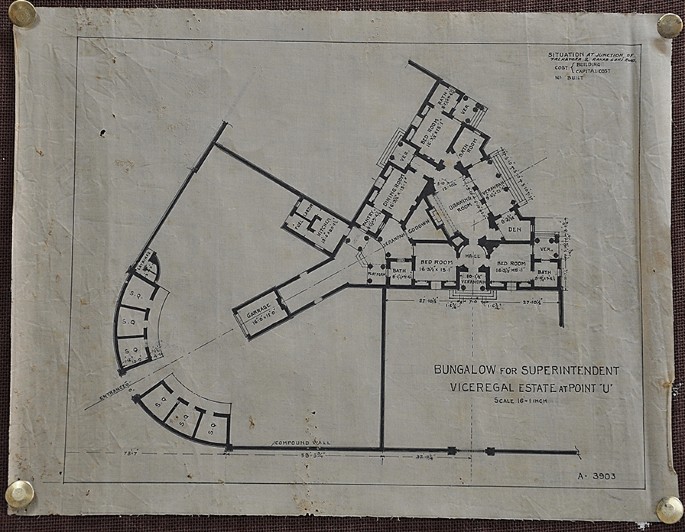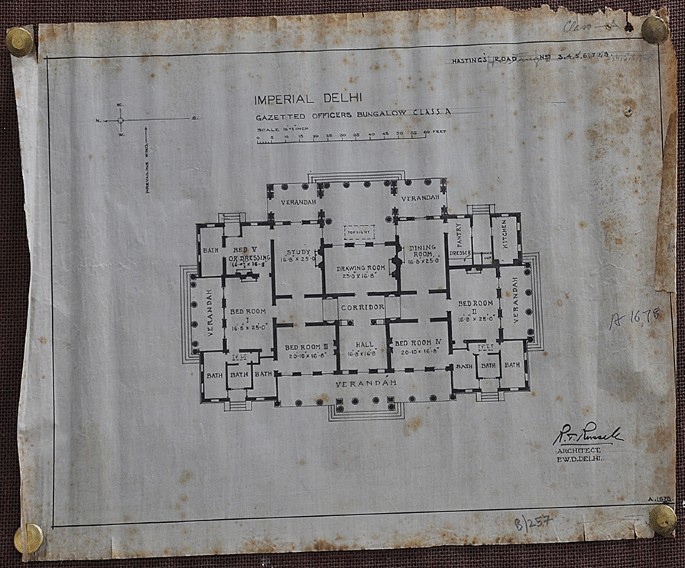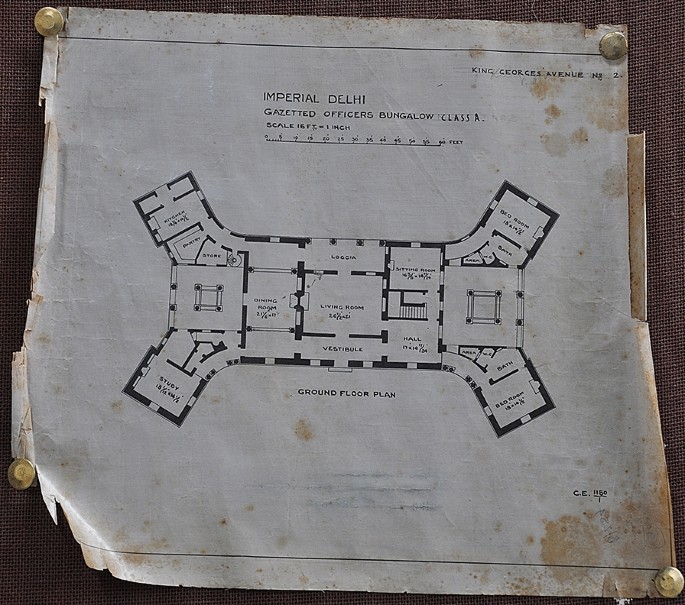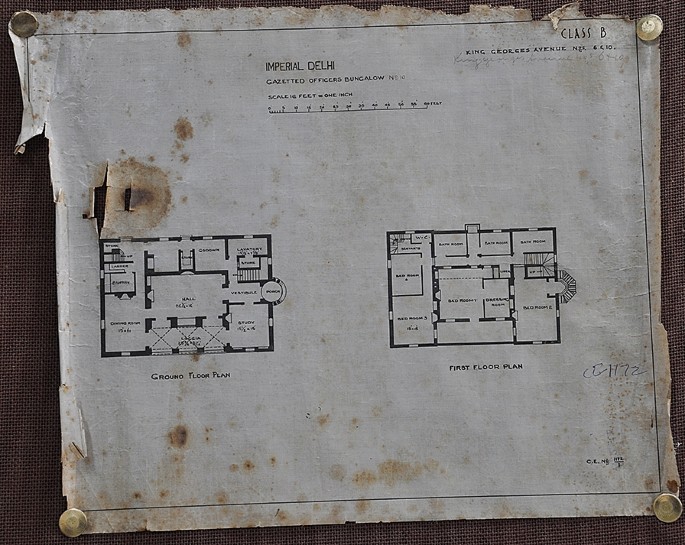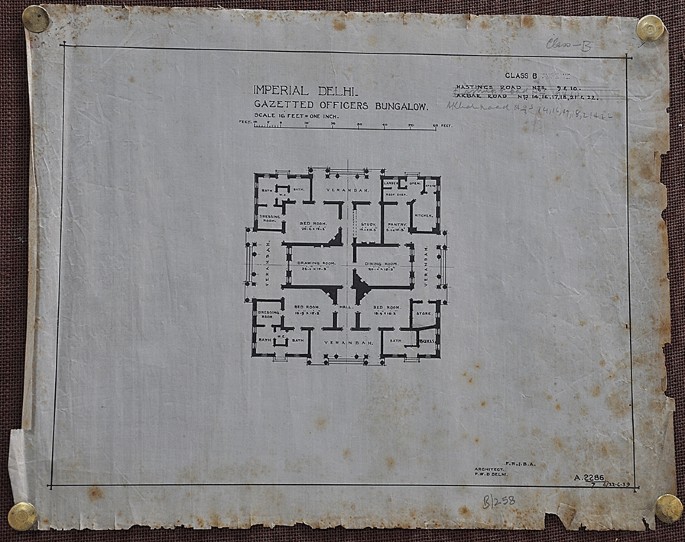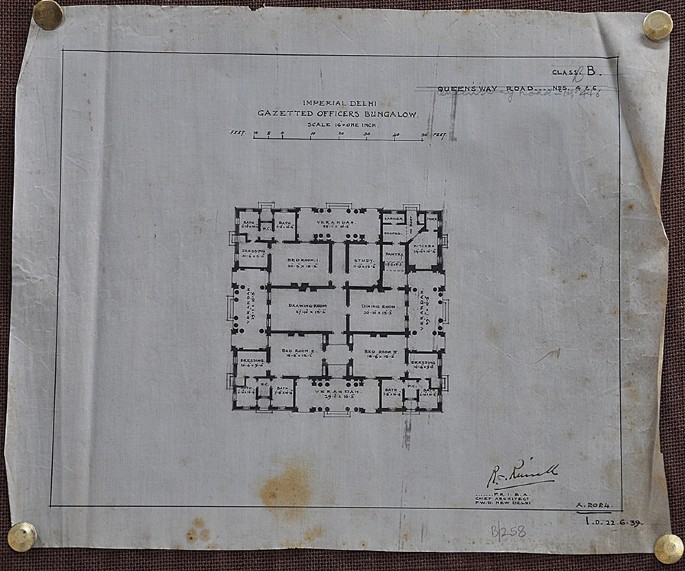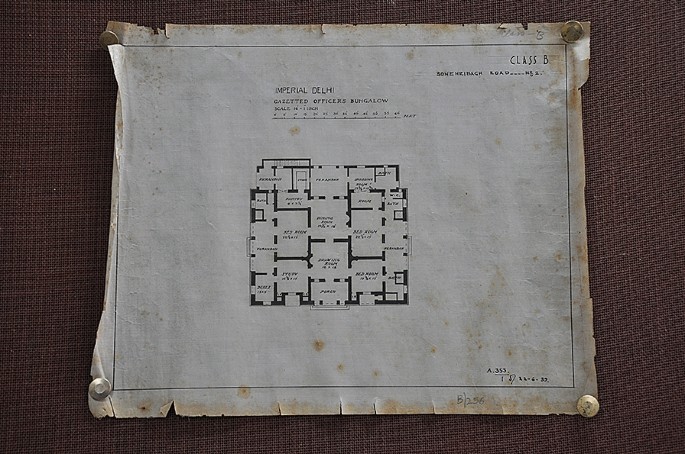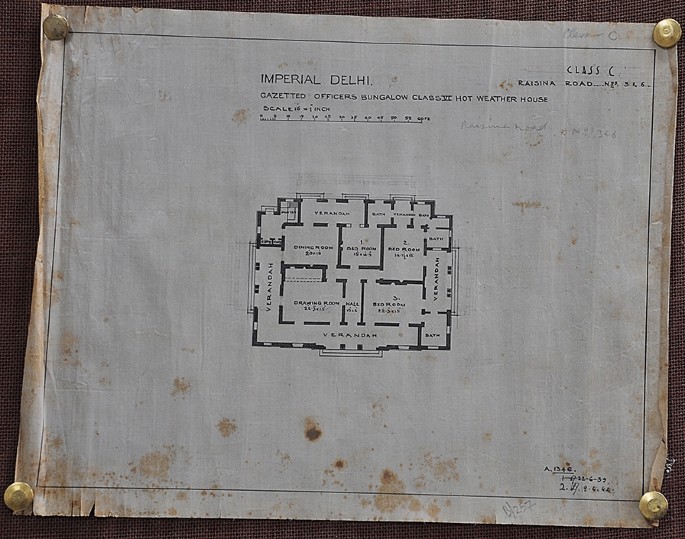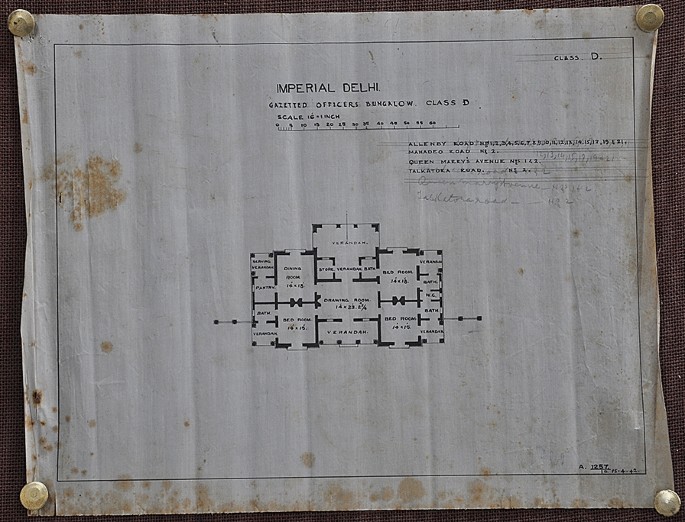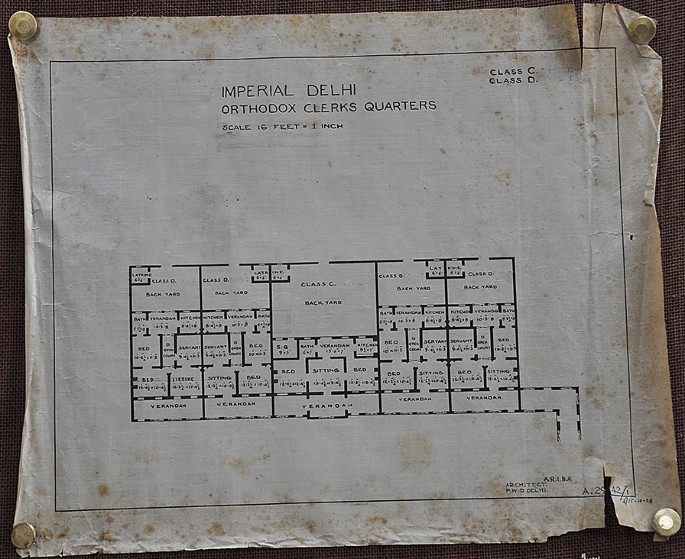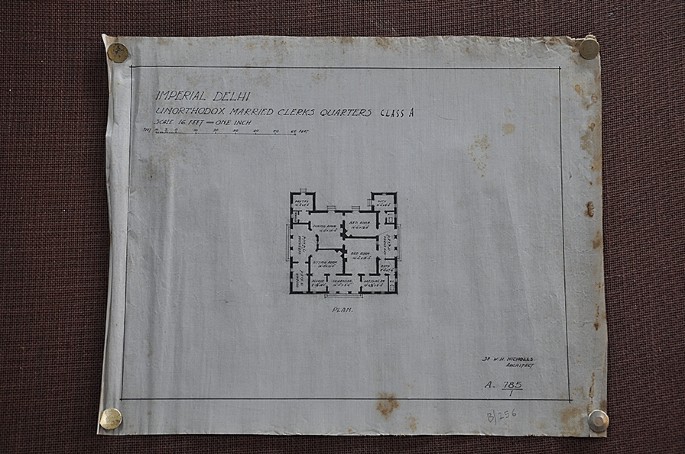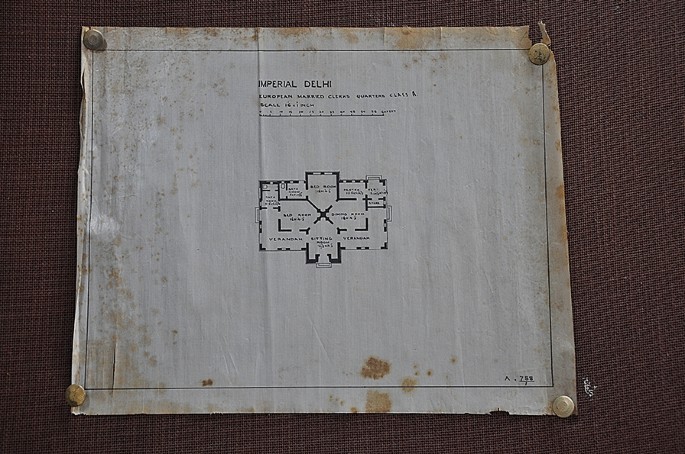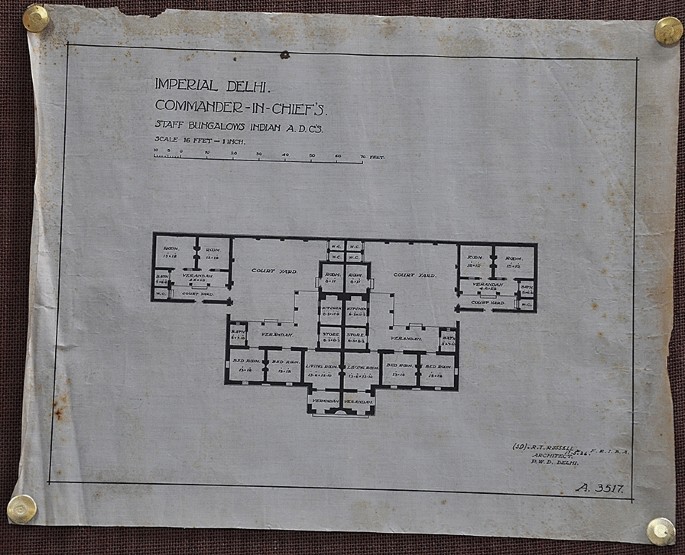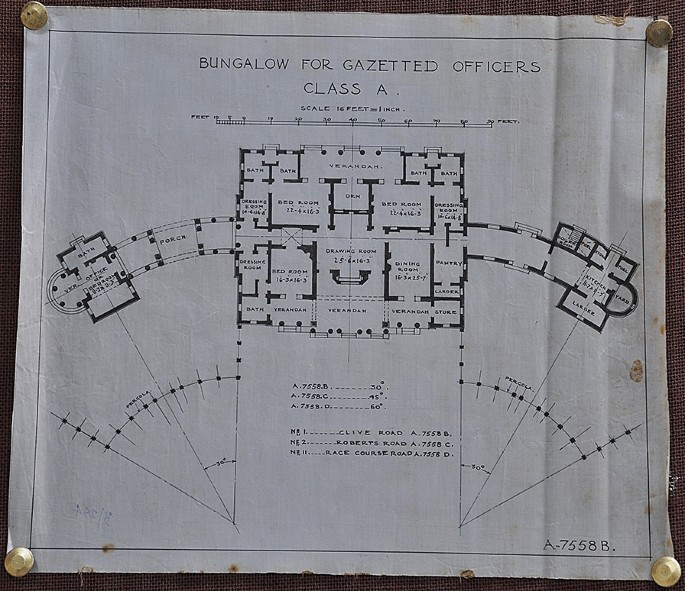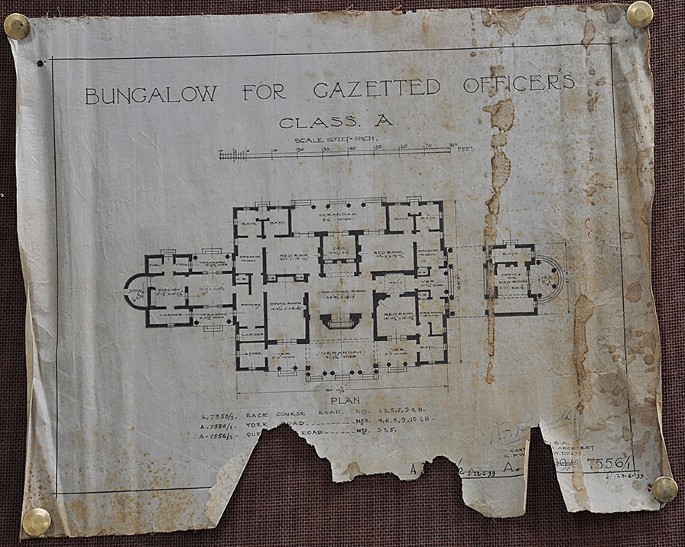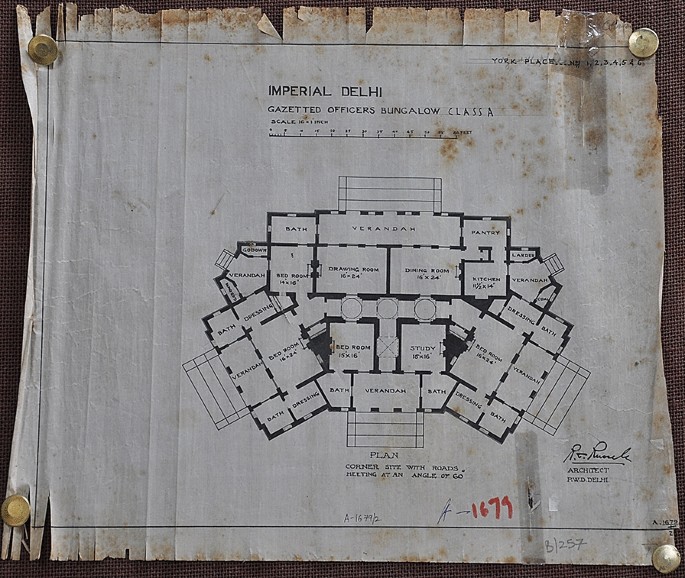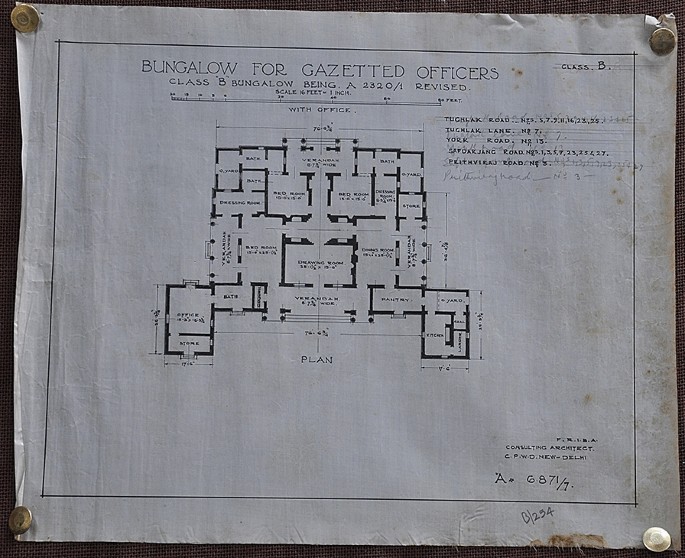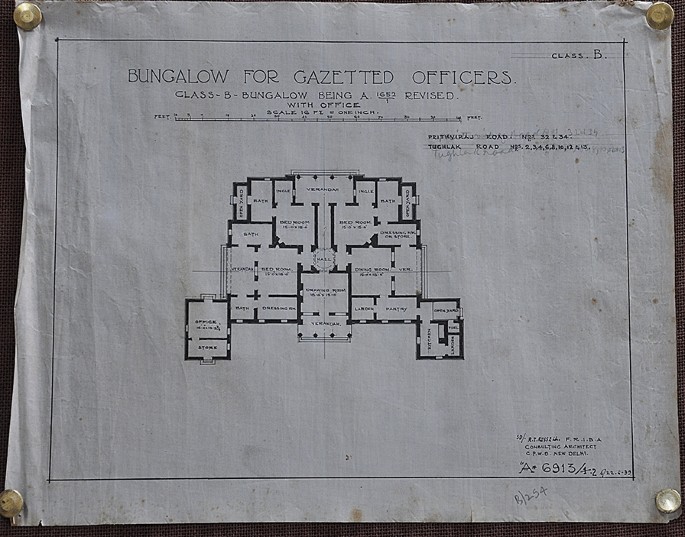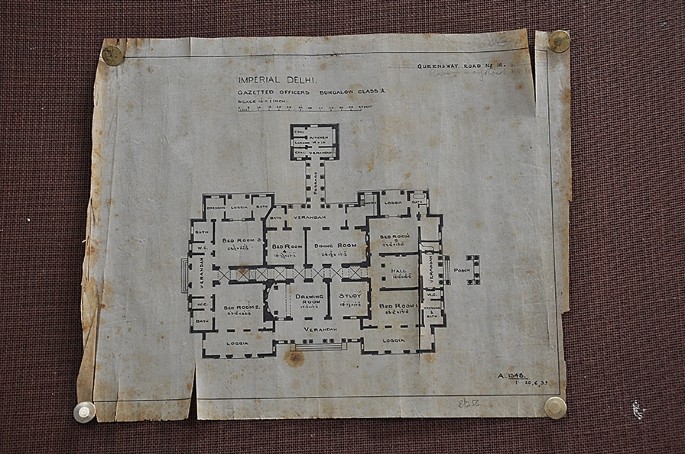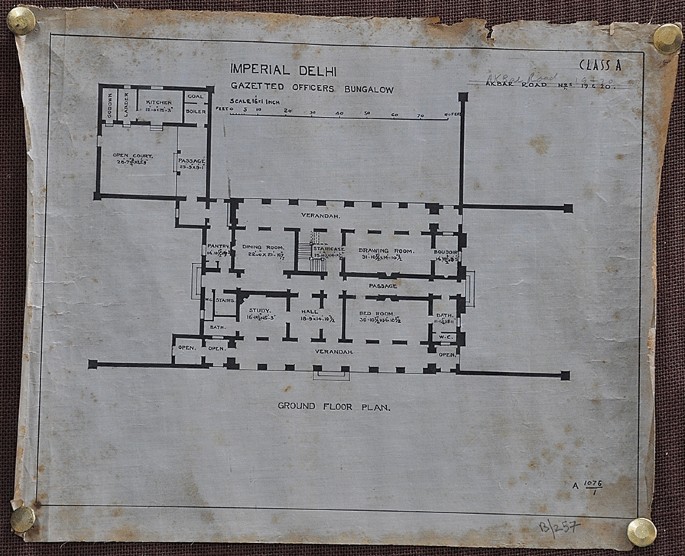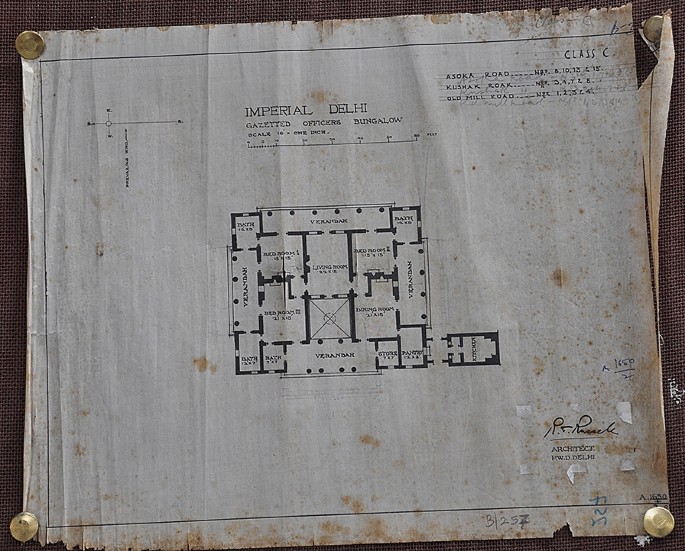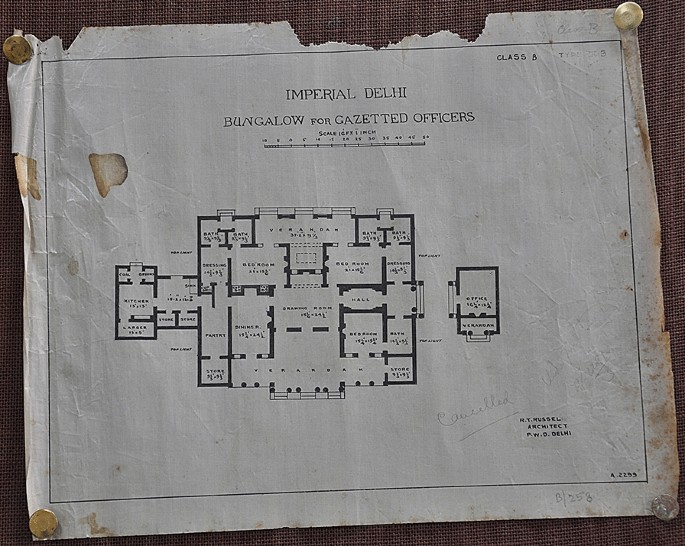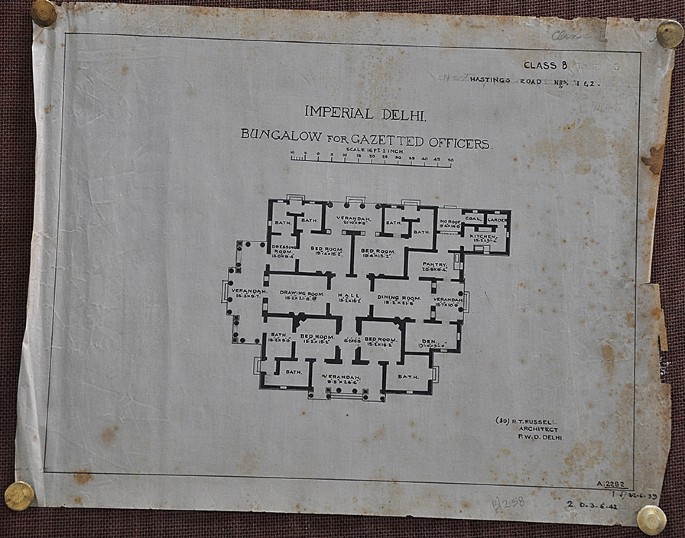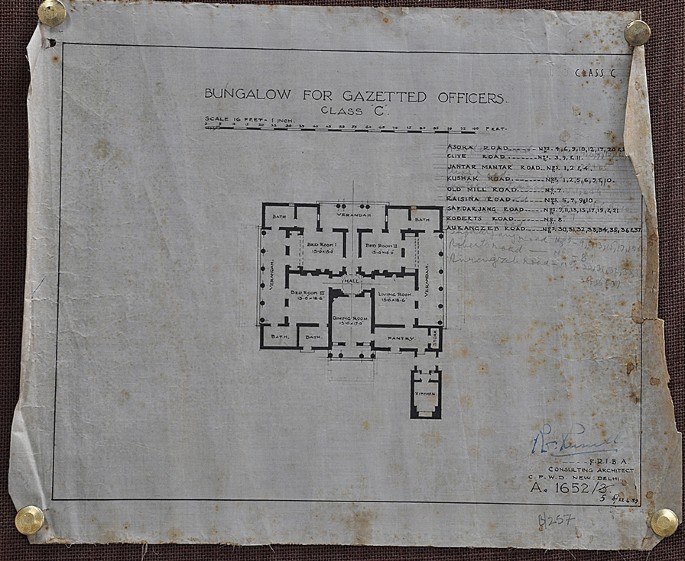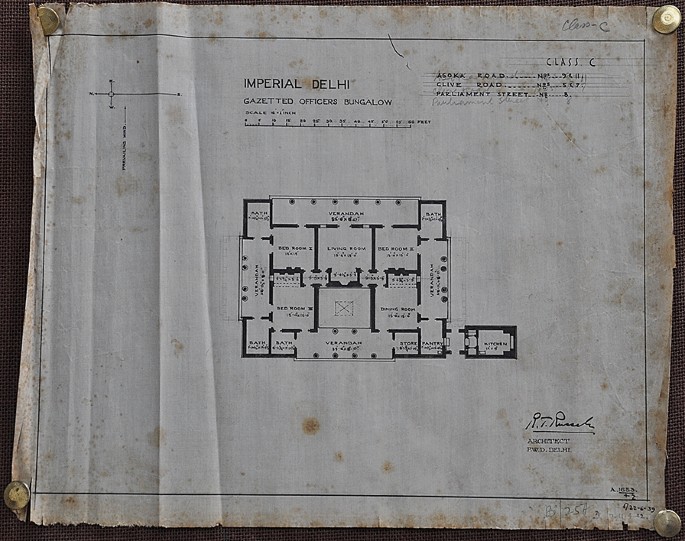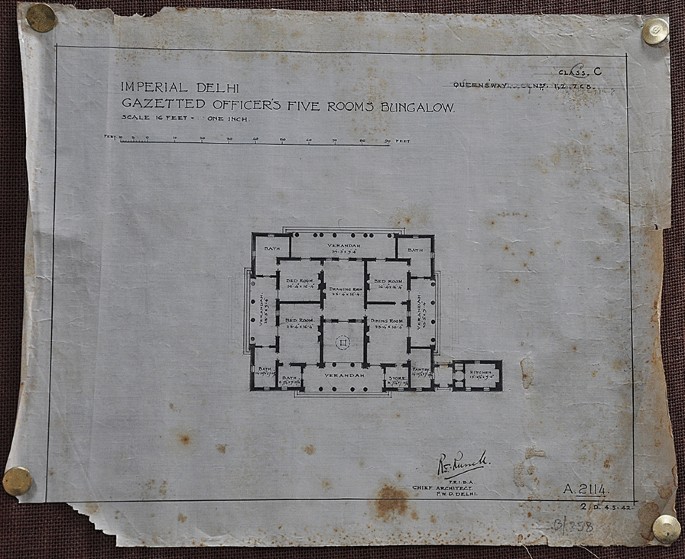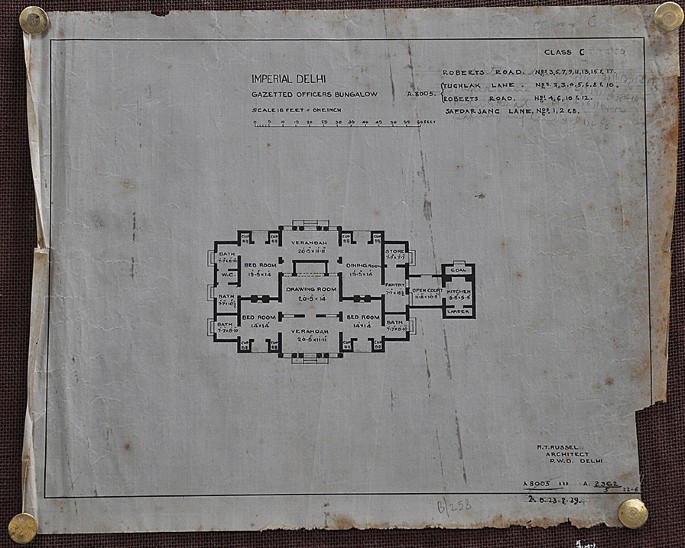Migrating architectures: Palladio’s legacy from Calcutta to New Delhi (original) (raw)
- Research article
- Open access
- Published: 02 June 2021
City, Territory and Architecture volume 8, Article number: 6 (2021)Cite this article
- 5905 Accesses
- 1 Citations
- 3 Altmetric
- Metrics details
Abstract
Palladianism, which originated in Italy, is a style of architecture which spread widely across the world and has been extensively studied. It is known that it migrated to the UK during the eighteenth century at the same time as it did to Germany through Georg Knobelsdorff, to Russia through the work of Charles Cameron and Giacomo Quarenghi, to the US through Thomas Jefferson between the eighteenth and nineteenth centuries, and was adopted in Poland, Sweden, and elsewhere. Palladianism became a tool of politicians and a status symbol for the elites to differentiate themselves from the common man. There are a few studies on the migration and adoption of Palladianism in India, primarily in relation to Calcutta’s architecture between the eighteenth and nineteenth centuries. In particular, there is specific research focusing on Lord Wellesley’s Palladian building programme, frequently highlighting the relationship between Government House, Calcutta and Kedleston Hall in Derbyshire. This essay focuses on the subject of the migration of Palladian architecture and, in particular, on its adoption by the capitals of India, Calcutta and Delhi, on the basis of primary archival material.
Introduction
Palladio’s work, given ‘its simplicity, its rationale, its universal comprehensibility’ (Wittkover 1974, 1995), inspired innumerable architects and artists, leaving a lasting impression on European and international architecture of future centuries. Indeed, different forms of Palladianism and neo-PalladianismFootnote 1 took root in places very distant from Vicenza, the home town of Andrea Palladio, in countries as far afield as the UK, the Netherlands, Germany, Switzerland, the US, and Russia (Forssman 1980). In India, during British rule, an oriental form of Andrea Palladio’s style was born.
The UK in particular, unlike other European countries, was a catalyst for the ‘Palladian manner’ both in Europe and around the world, as a consequence of its far-flung colonial empire. This is confirmed by the scholar Margherita Azzi Visentini when she writes: ‘nearly all of the architectural production generally referred to as Palladian by critics, is in fact a form of the British Neo-Palladianism of the eighteenth century’ (Azzi Visentini 2000, p. 14). Not only was Polish, German, and French eighteenth century architecture inspired by Great Britain, but also Catherine II’s Russia,Footnote 2 the British colonies in America which received the style from immigrants who carried it from their homeland, and of course there is also the Indian incarnation.
This essay focuses on Palladian architecture in India and comprises two major parts. The first provides a background analysing how the style reached Calcutta at the end of the seventeenth and eighteenth centuries, and the second on how it migrated to Delhi during the nineteenth and twentieth.
In particular, the essay showcases a series of interesting case studies in the capital of India, where the Palladian principles have been applied in an explicit but differentiated form. In addition, the essay, by comparing what happened in Calcutta and what in Delhi, is able to further underline the theory that styles migrate around the world but at every stage of the journey they clearly change their meaning and purpose.
Literature review and methodology
Few works have been published which explicitly and specifically focus on Palladian architecture in India. The only comprehensive work that I have been able to access is an unpublished MA thesis by Geraldine Smith-Parr entitled ‘Palladianism in India’ and, notwithstanding its title, it is only concerned with Palladianism in Calcutta. Most of the information on Palladianism in India can be found fragmented in more general volumes such as Sten Nilsson, European Architecture in India 1750–1850 and Swati Chattopadhyay, Representing Calcutta: Modernity, Nationalism and the Colonial Uncanny (Chattopadhyay 2005). Elsewhere, Palladianism is not analysed as broad phenomena in the Indian subcontinent but as a specific style relating only to one particular building, as in Marquis Curzon of Kedleston’s book British Government in India: The Story of the Viceroys and Government Houses (Curzon 1988; Harris and Jackson-Stops 1987). This essay, beyond its original analysis based on archival material, with hitherto unpublished images from the Central Public Works Department/INTACH also of course takes cognisance of extant published material on the subject.
Early Palladian influence in India
British Neo-Palladianism was imported into India by Lord Wellesley, who was appointed Governor General of the Indian colonies and reached the subcontinent in 1798 (Nilsson 1968, p. 101). The well-known Government House in Calcutta was to become just one of many projects that formed part of his celebrated ‘building programme’ which, through the use of a particular form of architecture, was intended to establish a manifesto of British colonial power. Lord Wellesley’s intention ‘to carry out an architectural advance’ (Nilsson 1968, p. 163), i.e. to invest in the construction or development of an iconic image for the colonial power, indeed embodied and brought to the subcontinent what was a complete novelty. Both the strategic reasons that determined the choice and use of this style, and the modifications it underwent in the course of its passage, are interesting issues.
At the beginning of the seventeenth century the East India Company had adopted a fiercely commercial policy in order to conserve resources and was certainly not interested in expending them, least of all wasting them, on the construction of lavishly expensive buildings. In this context, Lord Curzon writes: ‘The Company was “in fact” ruling large parts of India, rather than merely trading there, but the attitude of the Company’s Board of Control was still that of a trading company and expenditure of any magnitude on buildings was actively discouraged’ (Curzon of Kedleston 1925, p. 73). In all likelihood, the members of the Board of Control in London, having no direct hold on or vested interest in the Indian situation, thought it futile to invest in buildings or development far away from their native soil, not appreciating the political relevance that the construction of a recognisable British colonial identity could have. Lord Wellesley, in profound disagreement with the Company’s policy, and grounded in his profound confidence based on his previous experience, was nonetheless determined to realize his vision of a monumental Government House in Calcutta. This act of insubordination and defiance cost him his position and he was promptly recalled.Footnote 3
The underlying reasons that motivated and enthused the new governor to engage with a Palladio-inspired construction as soon as he disembarked, and to accord this project absolute priority in a calendar replete with economic, political, military, naval, commercial, and judicial reforms are extremely interesting. The East India Company Board of Directors in London had failed to understand that the East India Company at the end of the eighteenth century could no longer afford to play a purely commercial role, needing urgently to also acquire a political face.
Clive’s victories, along with Siraj-ud-Daulah’s, at Plassey in 1757, and even the subsequent ones of Wellesley himself against the French and Tipu Sultan in Mysore in 1799, had won the British a well-defined leadership position in India. During the second half of the eighteenth century, the only real remaining rival was France, the Dutch and the Portuguese not representing any real threat, the former having concentrated its colonies in the West Indies, the latter in Macao and Brazil. That left the Danish, a negligible presence, and actually wholly dependent on the British Empire. Wellesley had understood that a ‘building programme’ would be fundamental to demonstrate to both the other European powers, foremost France, and to the Indian rulers, that Great Britain was now in absolute control. The idea of constructing a colossal classicist building, such as Government House, and refurbishing Fort William was an act to tangibly demonstrate that Great Britain was now the only relevant power in India.
The precise reason for the choice of Neo-Palladianism above all other possible forms of classicism is a matter that still remains to be explored. At a first glance, it may be thought that this was because Neo-Palladianism had established itself as the national British style of architecture and was thus adopted in India in order to construct an image of the homeland abroad. As Geraldine Smith-Parr validly suggests, however, the reasons were more complex than this, for it must be taken into account that architectural choices often form part of a greater international, economic, and political framework.
In the selection of a model style for Lord Wellesley’s building programme in Calcutta, an observation of that of the French and Indian rulers was relevant. He realized that the architectural style employed by the French, both in Chandernagore and in Pondicherry, was inspired by the baroque and the rococo (Smith-Parr 1984, p. 9). He could not afford to permit the identity of the British colony to be confused with that of the enemy. Similarly, the use of the gothic architecture in India, although increasingly popular and feted in Great Britain, had been eliminated as a choice for it could easily have been confused with the local Hindu and Mughal styles. As Fergusson writes: ‘As far as the system of ornamentation is concerned, the Saracenic style is identical with the gothic: both uses pointed arches, clustered piers, vaulted roofs and they claim other features in common’ (Fergusson 1862)
Palladian buildings, characterized by the classical orders, i.e. the pediment and Greek temple front, were built in Calcutta while Wellesley was governor general and even after his departure. See for, example, the homes in Russel’s square and other public buildings such as Charles Wyatt’s (Listrum 1973) Government House and John Garstin’s Town Hall.
The application of the Palladian style is an exemplary case of a conscious effort being made to further a political agenda through architecture, with grandeur and monumentality being employed to symbolize political power. It is particularly relevant that the Palladian style and the classical features of classicism, on the one hand, have been adopted as a tool of power applied top-down, but on the other, the style has been adapted bottom-up to suit the local conditions and climate.
In order to better understand the adaptation processes, it is worth highlighting certain aspects of Government House in Calcutta, possibly the most prestigious and influential building in the Wellesley Palladian-building plan.
Government House has a farm-villa structure comprising a central body and wings on either side, not only visibly resembling Andrea Palladio’s Villa Badoer in Vicenza and Villa Mocenigo by his disciple Ottavio Bertotti Scamozzi, the wings extending outwards from the central building, characteristic of Palladian architecture. This happens to adapt perfectly to the hierarchies of Indian society, making it possible both to keep the untouchables at arm’s length and also hold the powerful odours of Indian cooking at a reasonable distance from the main body of the edifice.
The modifications of the interiors were based on function and for climatic reasons. Both the decorative elements as well as the construction materials were chosen on the basis of local availability.Footnote 4 Indeed, Calcutta House is built entirely of brick clad with white plaster (Curzon of Kedleston 1925, p. xv), stone being very rare in the lower delta of the river Ganges.Footnote 5 However, the determining element in the planning was the humid heat of the Bengal region, which obliged architects to increase all the ventilation features in their designs and to provide for protection from the scorching sun. In this effort to maximise the general flow of air and recirculate it within the building, internal masonry veneers were limited and preference was accorded to open layouts, and at the same time the distances between the columns were increased. In this context, Nilsson’s words are noteworthy:
adjustments [to the Calcutta climate] requires large dimensions, space and high ceilings and may also result in the colonnades not getting the correct proportions at intercolumnation. The buildings had to afford shade and ventilation, even if these had to be obtained at the expense of the accepted rules of classicism (Nilsson 1968, p. 120).
Europeans resentfully critiqued these intrinsic requirements as a form of betrayal of the established and stringent rules of classicism. They viewed the alterations in proportion as an error, without taking cognisance of the different context. In any event, the vast spaces obtained by virtue of the revised layout were perfectly in line with the representational function of Government House, which demanded halls for official occasions. As the existing ventilation was insufficient in affording adequate protection from the intense heat, further devices in the form of screens were adopted and also the veranda component.Footnote 6
Geraldine Smith-Parr provides a further basis for reflection when she writes, ‘the thing drawn from Palladio which was to became widespread in Indian Palladianism was the important central portico, visually surmounted by a temple front’ (Smith-Parr 1984, p. 78). These words are directly related to the Oechslinian concept of Façadismus,Footnote 7 validating the deduction that in India, in its first imperialist phase, British Neo-Palladianism was directly imported. This hypothesis is underlined by the many timbered façades of British-built buildings which began surfacing not only in Calcutta, but also in Bombay, Madras, and several other cities.
British colonial architecture at the end of the eighteenth century, even if it undertook climatic and cultural adaptation, broke entirely with the Indian aesthetic. As Percival Spears wrote, in recounting the life of Europeans in India, ‘the colonists first adopted Indian customs and associated with Indians, but then later, from about 1780, they avoided such intercourse’ (Oechslin 2006, p. 164–165; see also Spear 1932, 1963, p. 34). A revival of such architectural form was witnessed in the new capital of New Delhi in the twentieth century, even if in two different forms.
Palladio’s legacy in New Delhi’s public buildings
Palladian architecture migrated to Delhi before and after Delhi was declared the capital of the British empire, and the style was an inspiration both for public and private buildings, with different degrees of hybridisation with the local culture.
More or less at the same time as the Palladian style was being introduced to Calcutta, and when the British had just reached Delhi, one can observe a first example of classicism in St James’s church,Footnote 8 dating to the beginning of the nineteenth century. The church exhibited Doric capitals, pediment, columns, and a Greek temple façade. Quite an exceptional building in the context of the public buildings which were built after the capital moved from Calcutta to Delhi.
Indeed, at the cusp of 1857, the British crown increasingly governed the entire subcontinent and became the only colonial power of consequence. The British had, since 1883, united forces with the Indian National Congress (Torri 2000, p. 472) which vehemently opposed Britain rule and its choices for India. The Congress’s power had gradually increased during a span of fifty years and the widespread discontent of Indians in 1911 had become an acute dilemma for the British. The choice of Delhi as the new capital and its novel architecture essentially arose from an urgent need to find a solution to this. Among the principal motives contributing to the decision to move the capital was an ostensible desire to attempt some form of reconciliation with the local population. At the same time, the choice of Delhi as the capital endorsed a repositioning of the British crown from a geographical point of view, i.e. at the centre of the subcontinent.
The British architects, Edwin Lutyens (Greenberg 2007) and Herbert Baker, had been entrusted with the planning of the entire city of the new capital of Delhi. The establishment or foundation of an entirely new city is a problematic and cumbersome enterprise which entails the participation of many other architects, individuals in charge of planning and building networks of the main and secondary streets, public and private buildings, as well as delegation of the construction of civilian housing, residences for the maharajas, churches, and commercial areas (Fig. 1).
Fig. 1
(Source: Pilar Maria Guerrieri, Maps of Delhi, Niyogi, Delhi 2017, p. 220)
Layout Plan of New Delhi
Lord Hardinge, the governor general, advised Edwin Lutyens that there was a pressing necessity to mediate with local tradition in designing the government buildings.Footnote 9 The latterFootnote 10 was initially somewhat antagonistic to any form of amalgamation of cultures and was indeed obliged to find a compromise between Eastern and the Western architectural features. At an initial stage, he openly declared: ‘I do not believe there is any real Indian architecture or any great tradition’ (Lutyens 1981, 1988, p. 37). Notwithstanding the architect’s rigid position and his declared desire to resuscitate the Renaissance manner, he was driven into a detailed study of the cities of Agra, Fatehpur Sikri, Mandu, and other historically relevant sites of great architectural and artistic achievement and relevance. Indeed, to such a degree that when the planning for New Delhi had actually been completed, Lutyens admitted he had grown to appreciate a few Indian buildings and, in a letter to his wife in 1930, he went so far as to rebuke himself for not having immediately realised the high merits of the architecture and culture of the subcontinent.
The approach was now to incorporate within the buildings an ingenious use of stylistic elements drawn from Mughal, Hindu, Buddhist, and Persian cultures which had their roots in Indian architecture centuries before the arrival of the Europeans. Prime examples are the use of the characteristically Buddhist domes, the stupas, commissioned in the secretariats, and the pointed arches, the _chajja_s, used to provide shade to Viceroy’s House, the _chattri_s distributed across the exteriors, and decorations such as snakes, lotus flowers, and elephants. This is also manifest, in the choice of Mughal-style gardens and use of local construction materials and vegetation. This conscious architectural choice led to the adoption of multiple Indo-Saracenic styles,Footnote 11 referred to as the Lutyen’s style,Footnote 12 which became characteristic of the institutional buildings in the capital and was thus political in agenda. The elements or features from the Indian context were incorporated at multiple levels and most particularly in decoration.
Similarly, significant emphasis seems to also have been laid on aspects of Western classicism in terms of layout and proportions in the design of Lutyens public buildings, and particularly in the design of Viceroy’s House. It is therefore necessary to attempt to understand the degree to which the Palladio style was applied.
As far as the latter is concerned, Lutyens explicitly expressed his admiration for the Vicentino master. He writes to his friend Herbert Baker in 1903: ‘in architecture Palladio is the game! It is so big—few appreciate it now, as it requires training to value and realize it’ (Lutyens 1981, 1988, p. 33). Besides, innumerable letters were written directly by Lutyens heaping praise on Palladio, and this has been subsequently confirmed by many scholars. Andreas Volwahsen, for instance, writes ‘Palladio was one of Lutyens’s greatest models (Volwahsen 2002, p. 84). There was indeed an extraordinary affinity between the two architects. Moreover, Lutyens overtly cites the Vicentino master in his preliminary outline of the project for Viceroy’s House, and in this it is possible to find a direct sketch/reference to the renowned rotonda in Venezia as an inspiration.
The original proposal for Viceroy’s House, given the many economic constraints, obliged the architect to revise the layout of the building several times, but in each of the various versions he invariably refused to sacrifice the alignment of the building around a central axis. Indeed, the plan presents a very complex but invariably geometrical layout. Besides, the use of pure shapes and the accurate study of proportions in terms of elevation, published in 1931 by Byron (1931, p. 26), provides further insight into how meticulously classical rules were at the core of planning Viceroy’s House. Byron’s studies are not merely conjectures after the event but rather reflections based on an analysis of Lutyens’s original plans.
Notwithstanding the apparently linear design having had to incorporate or confront elements of the Indian tradition, Viceroy’s House is an expression of the so-called ‘Renaissance manner’, as articulated by Andreas Volwahsen, an expression providing a clear articulation of Palladio’s legacy to New Delhi. Gavin Stamp also interestingly remarks in this context: ‘Lutyens made a real synthesis of East and West in architecture which never lost its own inherent logic and discipline,’ (Lutyens 1981, 1988, p. 38) and here it should be noted that in his last two words ‘logic and discipline’, he summarizes the very essence of Palladianism in Delhi. What did remain of the Andrea Palladio’s legacy is the strict adherence to and respect for proportions.
It can therefore be said that the layout or façade of Viceroy’s House it is not merely a linear transposition of Palladio’s legacy but rather a far more complex process of elaboration and renegotiation of the principles of symmetry, measure, and proportion, for which of course Palladio is renowned.
It is not possible to analyse more buildings in detail for lack of space, but similar processes of hybridisation and fusion of features can be observed in other public buildings built at that time in New Delhi.
Palladian Indian bungalows
The residential buildings in New Delhi, built during the colonial period and after the declaration of Delhi as a new capital, are not as hybridised with the local culture as are their public counterparts. This is because the residential buildings are somewhat less involved in the political debate.
The bungalows of New Delhi undoubtedly assumed classicist lines, features, and proportions, demonstrating that the architect adhered to the short-lived but later Neo-Palladian movement_._ In designing the residences, these architects favoured Doric colonnades and layout symmetries, even if never, as in the public buildings, explicitly expressing an adherence to Palladio’s architecture.
Among the many architects who worked alongside Edwin Lutyens and Herbert Baker, Robert T. Russell was in charge of the construction of residential houses within the Public Works Department. In the PWC, under Russell’s guidance, other British architects were involved, such as C. G. Blomfield, W. H. Nicholls, J. P. W. Davies; not to mention the many Indian draftsmen: Ishaq, M. R. Chiplunkar, B. S. Soni, Jugal Kishore, Quamar Uddin, G. Mond, G. Singh, Lal Singh, F. N. Ginder, D. S. Chopra, D. C. Ardawa, C. N. Joshi, J. P. Saxena, Yash Paul, Iqbal Mohammad, Abdul Latif, Chand, C. B. Deolaliker, and many others whose signatures are very difficult to decipher. All the previous names were found directly on the drawings.
The documents and drawings of the bungalows built during British colonial rule, which clearly testify to this classical trend, are stored in the Central Public Works department archive in Delhi (a copy of these can also be found in the INTACH archive). Over 500 plans of these residential estates have been collected but only few are cited in this essay, which will be able to provide only a broad idea of the plans and facades of specific buildings and not one of the urban scale.
There are a variety of general plans showing the different sizes of housing plots and a series of detailed maps of the single bungalows. The bungalows are divided into different classes and types. There are class I, II III, IV, V, VI, according to the acres of land which each plot covered, from above 4 acres in class I down to under 2 acres in classes V and VI. Another separate class mentioned in the drawings is ‘private residences’. The definition of class A, B, C D and type I, II, III, IV were specifically referring to the bungalow’s typology, size, detached or semi-detached, and the like. Moreover, the subdivision is even more explicit on the different occupational levels of people working within the capital of the British empire. Indeed, every plan mentions whether the bungalow is for gazetted officers (executive /managerial level officer), clerks (general office task employee), orthodox or unorthodox, European clerks, Indian clerks, married or unmarried ones, and the like.
The most interesting aspects to compare and analyse in the drawings are the facades and plans of the different bungalows. Even if each class and type of bungalow is different, from the old photographs it is possible to discern the adoption of a uniform classicist form of facade, and the buildings plastered in white, using columns, Doric capitals, round arches and, in the exterior design, the use of symmetry and perfectly geometrical proportions (Figs. 2, 3, 4, 5, 6, 7, 8, 9, 10).
Fig. 2
Gazetted officer’s bungalow, Delhi 1930 (Archive CPWD/INTACH; image property: Pilar Maria Guerrieri)
Fig. 3
Gazetted officer’s bungalow, Delhi, 29.3.1928 (Archive CPWD/INTACH; image property: Pilar Maria Guerrieri)
Fig. 4
Gazetted officer’s bungalow, Delhi 1929 (Archive CPWD/INTACH; image property: Pilar Maria Guerrieri)
Fig. 5
Gazetted officer’s bungalow, Delhi 1928 (Archive CPWD/INTACH; image property: Pilar Maria Guerrieri)
Fig. 6
Gazetted officer’s bungalow, Delhi 1929 (Archive CPWD/INTACH; image property: Pilar Maria Guerrieri)
Fig. 7
Gazetted officer’s bungalow, Delhi 1930 (Archive CPWD/INTACH; image property: Pilar Maria Guerrieri)
Fig. 8
Commander-in-chief’s residence, Delhi, 1939 (Archive CPWD/INTACH; image property: Pilar Maria Guerrieri)
Fig. 9
Member’s bungalow, Delhi 1930 (Archive CPWD/INTACH; image property: Pilar Maria Guerrieri)
Fig. 10
Member’s bungalow, Delhi, c. 1935–9. (Archive CPWD/INTACH; image property: Pilar Maria Guerrieri)
The proportions and symmetries are even clearer from the plans and the interior design, and it is here that it is possible to trace the connection between the British bungalows and Palladian villas.
Perfect symmetry in the plan can be seen in almost all the designs. In private houses, such as that for the controller to H.E. the Viceroy (Fig. 11) and the bungalow for the superintendent of the viceregal estate (Fig. 12). In the single bungalow type class A, as for example gazetted officers bungalows on Hastings roadFootnote 13 (Fig. 13), on Akbar roadFootnote 14 (Fig. 14), and on King George’s avenueFootnote 15 (Fig. 15). Similarly, in gazetted officer bungalows class B on King George’s avenueFootnote 16 (Fig. 16) and in Sonehribagh roadFootnote 17 (Fig. 17). A perfect square-shaped single bungalow can be found in gazetted officer bungalow class B on Hastings road,Footnote 18 on Akbar roadFootnote 19 (Fig. 18), on Queensway (now Janpath)Footnote 20 (Fig. 19), and in SonehribaghFootnote 21 (Fig. 20). Also, in the single bungalow class C on Raisina roadFootnote 22 (Fig. 21) and gazetted officers class D on Allemby road,Footnote 23 on Mahadeo road,Footnote 24 on Queen Mary’s Avenue,Footnote 25 and on Talkatora roadFootnote 26 (Fig. 22). Symmetry is even applied to the lower-class single bungalows, as can be seen in the orthodox clerks’ quarters class C–D (Fig. 23), unorthodox clerks quarters, class I-A (Figs. 24 and 25), European married clerks quarters (Fig. 26). And the commander-in-chief’s Indian staff bungalows (Fig. 27).
Fig. 11
House for comptroller to H.E. the Viceroy, Delhi (ground floor plan) c. 1935–9 (Archive CPWD/INTACH; image property: Pilar Maria Guerrieri)
Fig. 12
Bungalow for superintendent, Viceregal Estate, Delhi (ground floor plan) c. 1935–9 (Archive CPWD/INTACH; image property: Pilar Maria Guerrieri)
Fig. 13
Gazetted officer’s bungalow class A, Delhi (ground floor plan by Russel). c. 1935–9 (Archive CPWD/INTACH; image property: Pilar Maria Guerrieri)
Fig. 14
Gazetted officer’s bungalow class A, Delhi (first floor plan) c. 1935–9 (Archive CPWD/INTACH; image property: Pilar Maria Guerrieri)
Fig. 15
Gazetted officer’s bungalow class A, Delhi (ground floor plan) c.1935–9 (Archive CPWD/INTACH; image property: Pilar Maria Guerrieri)
Fig. 16
Gazetted officer’s bungalow class B (ground and first floor plan), c.1935–9 (Archive CPWD/INTACH; image property: Pilar Maria Guerrieri)
Fig. 17
Gazetted officer’s bungalow class B, Delhi (ground floor plan), c. 1935–9 (Archive CPWD/INTACH; image property: Pilar Maria Guerrieri)
Fig. 18
Gazetted officer’s bungalow class B, Delhi (ground floor plan), c. 1935–9 (Archive CPWD/INTACH; image property: Pilar Maria Guerrieri)
Fig. 19
Gazetted officer’s bungalow class B, Delhi (ground floor plan) signed by Russell) 22.6.1939 (Archive CPWD/INTACH; image property: Pilar Maria Guerrieri)
Fig. 20
Gazetted officer’s bungalow class B, Delhi, (ground floor plan), c. 1935–9 (Archive CPWD/INTACH; image property: Pilar Maria Guerrieri)
Fig. 21
Gazetted officer’s bungalow class C, Delhi (ground floor plan), c. 1935–9 (Archive CPWD/INTACH; image property: Pilar Maria Guerrieri)
Fig. 22
Gazetted officer’s bungalow class D, Delhi (ground floor plan), c. 1935–9 (Archive CPWD/INTACH; image property: Pilar Maria Guerrieri)
Fig. 23
Orthodox clerk’s quarters class C–D (ground floor plan), Delhi c. 1935–9 (Archive CPWD/INTACH; image property: Pilar Maria Guerrieri)
Fig. 24
Unorthodox clerk’s quarters, class I, ground floor plan) signed by W. H. Nicholls), Delhi c. 1935–9, (Archive CPWD/INTACH; image property: Pilar Maria Guerrieri)
Fig. 25
Unorthodox clerk’s quarters, class A, (ground floor plan), signed by W. H. Nicholls), c. 1935–9, (Archive CPWD/INTACH; image property: Pilar Maria Guerrieri)
Fig. 26
European married clerk’s quarters, class A, Delhi (ground floor plan), c. 1935–9 (Archive CPWD/INTACH; image property: Pilar Maria Guerrieri)
Fig. 27
Commander-in-chief’s Indian staff bungalows, Delhi (ground floor plan), signed by Russell, c. 1935–9 (Archive CPWD/INTACH; image property: Pilar Maria Guerrieri)
Symmetry is also to be found in bungalows with wings, as in the gazetted officer class A on Clive road,Footnote 27 on Roberts road,Footnote 28 and on Race Course roadFootnote 29 (Fig. 28), and those on York road,Footnote 30 on Qeensway (now Janpath),Footnote 31 and on Race Course roadFootnote 32 (Fig. 29). Interesting too is the design of the gazetted bungalow class A on a corner site with roads meeting at an angle of 60° at York placeFootnote 33 which is perfectly symmetrical with a columned veranda on each side (Fig. 30). Another example of a bungalow with wings is gazetted officers class B on Tughlak road,Footnote 34and lane,Footnote 35 on York road,Footnote 36 Safdarjang road,Footnote 37 and Prithviraj roadFootnote 38 (Fig. 31), as well as the gazetted officers class B on Prithviraj roadFootnote 39 and on Tughlak roadFootnote 40 (Fig. 32).
Fig. 28
Bungalow for gazetted officers. class A, Delhi (ground floor plan) c. 1935–9 (Archive CPWD/INTACH; image property: Pilar Maria Guerrieri)
Fig. 29
Bungalow for gazetted officers class A, (ground floor plan), signed by Russell, Delhi c. 1935–9 (Archive CPWD/INTACH; image property: Pilar Maria Guerrieri)
Fig. 30
Bungalow for gazetted officers class A, Delhi (ground floor plan), signed by Russell, c. 1935–9 (Archive CPWD/INTACH; image property: Pilar Maria Guerrieri)
Fig. 31
Bungalow for gazetted officers class B, Delhi (ground floor plan) c. 1935–9 (Archive CPWD/INTACH; image property: Pilar Maria Guerrieri)
Fig. 32
Bungalow for gazetted officers class B (ground floor plan), signed by R. T. Russell, on 22.6.1939, Delhi (Archive CPWD/INTACH; image property: Pilar Maria Guerrieri)
Even in the residential estates, where the use of classical elements is purer than in Delhi’s public buildings, and similar to what occurred in Calcutta, there are innumerable bungalows where the classicist elements are influenced by many cultural, climatic, and environmental factors. The kitchen for instance, given the strong aroma of Indian food and the presence of servants, is always kept separate or detached from the main house in all bungalows from class A to class D. See, for example, the gazetted officer bungalow class A on Queensway (now Janpath)Footnote 41 (Fig. 33), and even those on Akbar roadFootnote 42 (Figs. 34 and 35), the gazetted officers bungalow class A on Queensway roadFootnote 43 (Fig. 36). Also, the gazetted officers class B (Fig. 37) and the gazetted officer class B on Hastings roadFootnote 44 (Fig. 38). The gazetted officers class C on Ashoka roadFootnote 45 (Fig. 39), on Ashoka roadFootnote 46 (Fig. 40) and on QeenswayFootnote 47 (Fig. 41) and on Roberts roadFootnote 48 (Fig. 42).
Fig. 33
Bungalow for gazetted officers class A (ground floor plan), c. 1935–9 (Archive CPWD/INTACH; image property: Pilar Maria Guerrieri)
Fig. 34
Bungalow for gazetted officers class A (ground floor plan), c. 1935–9 (Archive CPWD/INTACH; image property: Pilar Maria Guerrieri)
Fig. 35
Bungalow for gazetted officers class A (ground floor plan) c. 1935–9] (Archive CPWD/INTACH, image property: Pilar Maria Guerrieri)
Fig. 36
Bungalow for gazetted officers class A (ground floor plan), signed by C. G. Blomfield, Delhi c. 1935–9 (Archive CPWD/INTACH, image property: Pilar Maria Guerrieri)
Fig. 37
Bungalow for gazetted officers class B (ground floor plan) signed by R. T. Russell, c. 1935–9 (Archive CPWD/INTACH; image property: Pilar Maria Guerrieri)
Fig. 38
Bungalow for gazetted officers class B (ground floor plan) signed by R. T. Russell on 27.6.1939 (Archive CPWD/INTACH; image property: Pilar Maria Guerrieri)
Fig. 39
Bungalow for gazetted officers class C (ground floor plan) signed by R. T. Russell on 22.6.1939 (Archive CPWD/INTACH; image property: Pilar Maria Guerrieri)
Fig. 40
Bungalow for gazetted officers class C (ground floor plan) signed by R. T. Russell on 22.6.1939 (Archive CPWD/INTACH; image property: Pilar Maria Guerrieri)
Fig. 41
Bungalow for gazetted officers class C, (ground floor plan), signed by R. T. Russell on 4.5.1942 (Archive CPWD/INTACH; image property: Pilar Maria Guerrieri)
Fig. 42
Bungalow for gazetted officers class C (ground floor plan), signed by R. T. Russell on 23.8.1939 (Archive CPWD/INTACH; image property: Pilar Maria Guerrieri)
A characteristic which is identifiable in more or less all the plans, including the earlier ones, is that the bathrooms are often positioned at the corners of the bungalow always accessible from outside by ‘untouchable’ cleaning staff (see Figs. 35, 36, 37, 38, 39, 40, 41, 42).
The openings, windows and doors, are all in line with one another to allow the breeze to flow from one side of the building to the other, the veranda is generously utilised to prevent direct sunlight to enter and heat the house, and there are holes at the top of the walls to allow the hot air to move upwards and exit the house. These adaptational aspects are very interesting because they illustrate very graphically the hybridisation processes which classical imported elements underwent and the reasons underlying this.
Conclusions
Classicism and the Palladian style of architecture is tightly linked to the British colonial period. It is abundantly clear from the previous section that during the eighteenth century the British had chosen the Italian master’s legacy as an indirect yet visible symbol of British power in India. It was used not just as an image of British power but also as a tool to segregate the British elites from the local inhabitants, and as a means of providing a degree of comfort and a healthy environment to its residents. Beyond this, it also become a status symbol.
The classical style of architecture based on Palladian principles was applied in both the Indian capitals. Calcutta was defined as being ‘entirely European in character: a “City of Palaces” of brick and stucco’ (Sharp 1921, p. 36). It was not therefore considered to be under any threat of being construed to be a Western city transplanted on the Indian landscape notwithstanding all the social and climatic adaptations it underwent. New Delhi’s architecture, both public and residential, are good examples of the use of Palladian and classical principles notwithstanding climatic and other adaptation. From Calcutta to Delhi the style changed in consonance with political British power, from a style that sought to demonstrate British dominance in India to one that did so implicitly but yet was acceptable to the local inhabitants, and in both cases influenced by the social and climatic conditions.
The classical reference to the Palladian style is evident in the case of the Viceroy and Government House of Calcutta in its planimetric layout, facades and the patio with columns, but it is less formally immediate in the case of Delhi and of the bungalows built in the colonial period. While, in the first case, the choice of a classical iconography is imposed from above, in the following constructions, choices prevail which mainly respond to local living needs; even if some lineaments persist in the constructions, such as the patio and the colonnade of a central body which responds to the hot humid climate and which is integrated by the distinction between volumes destined for habitation and those for service activities, also corresponding to distinct social classes.
This study demonstrates that both Calcutta and Delhi, on one hand, directly or indirectly, utilised, the Palladio style and European classicism as an inspiration and yet, on the other, subjected them to local adaptation processes not necessarily universally appreciated and not to the same extent. The urge on the part of the British government to incorporate elements from the Indian context in their planning, as a possible attempt to impart a national character to British Neo-Palladian architecture, is an effective example of how architecture can adapt to a local context through the utilization of locally derived forms stylistic elements, and materials for social and environmental reasons.
In the poetics of Palladio’s works there is an inherent system of grammatical rules, learned from the study of monuments of antiquity, and found in the criteria of choice of the position of each of his works, of the orientation of the entrances and openings towards the outside, as well as in the flexibility of the functional organization of a model which nevertheless maintains the recognizability of certain formal lineaments. In the case of Palladio's works and its reinterpretation around the world, there is a tendency to privilege the classical aspects of the facades—_façadismus_—of the requests of public or private clients, partly neglecting the attention Palladio dedicated to the environmental and landscape context, the flexibility in the choice of the relationships between volumes and their respective positions, and the very interesting local and environmental adaptation that his reinterpretations underwent.
Palladio's language, as it is transmitted by his works and systematized in his “Four Books of Architecture”, actually spread beyond the monumentality and power that its classical facades may emanate.
Availability of data and materials
The data used and analysed during the current study are available from the author.
Notes
- Palladianism or neo-Palladianism are controversial terms and, as ‘isms’, present a major risk of generalisation and are therefore used with caution by scholars. See Oechslin (2006), passim; and Argan (1980).
- Catherine II’s architect Charles Cameron, whose father had worked for Burlington_._
- Lord Wellesley came to India in 1978 and was recalled in 1805.
- ‘The two houses resemble each other most in general plan, in scale, and at least in internal layout, external decoration and building materials. The external decoration and the materials used were a function of the techniques and materials available to builders in Bengal at that period. The alterations to the internal layout were made mainly because of the requirements of climate; the horrors of the ganges delta climate were constantly remarked by contemporary observers.’ Smith-Parr (1984, p. 43).
- Refractory bricks were an innovation in comparison to the old construction techniques which included the use of kutcha bricks or bricks dried in the sun. ‘The main building material was locally-fired brick. This was an improvement on the earlier building technique, which was to use sun-dried or cutcha bricks.’ Smith-Parr (1984, p. 37).
- ‘Verandas are the architectural element that took the place of our porticos in hot, humid India, to make the building as “flexible” as possible’. Nilsson (1968, p. 178).
- ‘British Palladianism is inclined to a certain _Façadismus_’, in Oechslin (2006, p. 251).
- ‘This church [St James] was erected perhaps about 1824. It is just inside the Kashmir gate. The design is Palladian, with a good dome.’ Sharp (1921, p. 115).
- ‘It has been argued, did the British, by putting up buildings which embodied the essence of the north Indian tradition of imperial architecture, seek to capture for themselves the authority, unquestioned and legitimate of their Mughal predecessors. The use of red sandstone as a building material, and the decorative scheme of turrets, pierced stone screens, chattris and porticoes, as well as the placement of the new city adjacent to the old Mughal capital of Shahjahanabad, have all been taken as evidence of the British endeavour to create for themselves an imperial capital in the Mughal grand manner.’ Metcalf (1980, p. 6–12).
- Edwin Lutyens was the principal architect in charge, but not the only one; one of the most important of his collaborators was Herbert Baker.
- ‘Fusion of Venetian Gothic with domes, minarets forms and arcading details of Oriental derivation, all boldly wrought into the hybrid style known as Indo-Saracenic’ in Meade (1987, p. 29). Swinton Jacob is one of the principal exponents of the Indo-Saracenic style and of Mughal revival architecture.
- ‘The strategies used by the revivalists were ironically similar to those used earlier by colonial architects who had attempted to indigenise their design by creating the so-called Indo-Saracenic style. […] the revivalists used similar arguments to justify their works. The basic nature of their architecture, however, did not change and, except for the new rhetoric, revivalist architects never questioned the ontological significance of the way they designed and built. Both the Indo-Saracenic architects and the revivalists plundered the store of iconic images from the past without the impediments of taste and understanding. The modernists were no better. Their icons were the buildings in the international style then holding sway in the West. […] Modern Indian identity continued to be constructed using non-local icons [… the search for] more appropriate, strategies of form-making and place-making […] Earlier attempts at “Indianisation” were merely literal representations of architectonic elements taken from historical buildings, like chattris, domes, chajjas and arches (Menon 2008, p. 40, 42).
- Nos. 3, 4, 5, 6, 7, 8.
- Nos. 19 and 20.
- No. 2.
- Nos. 6–10.
- No. 4.
- Nos. 9, 10.
- Nos. 14, 16, 17, 18, 21, 22.
- Nos. 4, 6.
- No. 2.
- Nos. 3, 6.
- Nos. 1, 2, 3, 4, 5, 6, 7, 8, 9, 10, 11, 12, 13, 14, 15, 17, 19, and 2.
- No. 2.
- Nos. 1 and 2.
- No. 2.
- No. 1.
- No. 2.
- No. 11.
- Nos. 4, 6, 8, 9, 10, and 11.
- Nos. 3, 4 and 5.
- Nos. 1, 3, 5, 7, 9, 4 and 11.
- Nos. 1–6.
- Nos. 5, 7, 9, 11, 16, 23, and 16.
- No. 7.
- No. 13.
- Nos. 1, 3, 5, 7, 23, 25, 27.
- No. 3.
- Nos. 32 and 34.
- Nos. 2, 3, 4, 6, 8, 10, 12, and 13.
- No. 10.
- Nos. 19, 20; no. 25.
- No. 9.
- Nos. 1 and 2.
- Nos. 4, 6, 9, 10, 12, 17, and 20, on Clive road nos. 3, 9, 11, on Jantar Mantar road nos. 1, 2, 4, on Kushak Road n. 1, 2, 5, 6, 9,and 10, on Old Mill road no. 7, on Raisina road nos. 5, 7, 9, and 10, on Safdarjung road nos. 9, 11, 13, 15, 17, 19, 21, on Roberts road, no. 8, on Aurangzeb (now Abdul Kalaam) road nos. 30, 31, 32, 33, 34, 35, 36, and 37.
- Nos. 9 and 11, on Clive road nos. 5 and 7, on Parliament street n. 8.
- Nos. 1, 2, 7, and 8.
- Nos. 3, 4, 5, 6, 7, 9, 10, 11, 12, 13, 15, and 17, on Tughlak lane nos. 2, 3, 4, 5, 6, 8, and 10, on Safdarjang lane no. 1, 2, and 8.
References
- Argan GC (1980) Palladio e il palladianismo, inaugural speech at the fourth centennial commemorating the death of Andrea Palladio, delivered at the Capitol on 15 May 1980, organized by the National Committee for Celebrations
- Azzi Visentini M (2000) Intorno al neopalladianesimo: aggiunte e precisazioni. Studi in onore di Renato Cevese. Padova, Marsilio
Google Scholar - Byron R (1931) New Delhi. In: AR, vol LXIX, n. 410
- Chattopadhyay S (2005) Representing Calcutta: modernity, nationalism and the colonial uncanny. Routledge, London
Book Google Scholar - Curzon RN (1988) Kedleston Hall: the historic home of the Curzon family, official guide. Derbyshire County Ltd., Derby
Google Scholar - Curzon of Kedleston (1925) British Government in India: the story of the viceroys and government houses, vol I. Cassell and Company Ltd., London
Google Scholar - Fergusson J (1862) History of modern architecture, vol. VIII, Bk VIII, chapter I, London
- Forssman E (1980) Il palladianesimo: un tentativo di definizione, in Palladio e la sua eredità nel mondo. Electa, Milano
Google Scholar - Greenberg A (2007) Lutyens and the modern movement. Papadakis Publisher, London
Google Scholar - Harris L, Jackson-Stops G (1987) Robert Adam and Kedleston: the making of a neoclassical masterpiece. Victor Gollancz, London
Google Scholar - Listrum D (1973) The Wyatt family, catalogue of the drawing collection of the Royal Institute of British Architects, London
- Lutyens EL (1981, 1988) Lutyens: the work of the English Architect: Sir Edwin Lutyens (1869–1944), catalogue of the exhibition at Hayward Gallery London SE1 18 Nov. 1981–31 January 1982. Arts Council of Great Britain
- Meade M (1987) Europe in India. In: The architectural review, vol CLXXXII, n. 1086
- Menon AGK (2008) The invention of modern Indian architecture. In: Architecture + design
- Metcalf TR (1980) Architecture and empire. In: History Today
- Nilsson S (1968) European architecture in India 1750–1850. Faber & Faber, London
Google Scholar - Oechslin W (2006) Palladianesimo. Teoria e prassi, trans. Elena Filippi. Arsenale editrice, Venezia
Google Scholar - Sharp H (1921) Delhi: its story and buildings. Oxford University Press, London
Google Scholar - Smith-Parr G (1984) Palladianism in India. Lord Wellesley’s Patronage of Charles Wyatt at Calcutta: his plan for the College of Fort William in Bengal and for a New Country Residence at Barrackpre. MA. degree, Courtauld Institute of Art, London
- Spear P (1932, 1963) The Nabobs. London
- Torri M (2000) Storia dell’India. Editori Laterza, Bari
Google Scholar - Volwahsen A, Delhi I (2002) Imperial Delhi: The British capital of the Indian empire. Prestel, New York
Google Scholar - Wittkover R (1974, 1995) Palladio e il palladianesimo, trans. Margherita Azzi Visentini, Einaudi, Torino, p 112
Acknowledgements
Warm thanks to Profs. Paolo Ceccarelli and A. G. Krishna Menon who have always been there to give a fillip to my thinking.
Author information
Authors and Affiliations
- Politecnico di Milano, via Leonardo da Vinci 32, 20133, Milan, Italy
Pilar Maria Guerrieri
Authors
- Pilar Maria Guerrieri
Contributions
The only author is Pilar Maria Guerrieri. The author read and approved the final manuscript.
Authors’ information
Dr. Pilar Maria Guerrieri lives between Milan, London and Delhi since the past nine years. She holds a Ph.D. with honours in ‘Architectural Composition’ from Politecnico di Milano, in collaboration with the Indian National Trust for Art and Cultural Heritage in Delhi and Westminster University in London. She has been extensively studying the city of Delhi pre- and post-Independence and, in particular, the impact of British and American cultures on its urban planning and architecture. She has been researching European and Indian cultures, the development of megacities and the effects of cultural exchanges, exploring the meaning of terms such as ‘tradition’, ‘legacies’ and ‘heritage’. Pilar since she finished her Ph.D. is teaching. She has been Associate Professor in ‘History of Architecture and Human Settlements’ in Delhi at the Italian-Indian GD Goenka University, branch of Politecnico di Milano in India, and now she is Assistant Professor in ‘History of Architecture’ and ‘Urban History’ at Politecnico di Milano in Italy. She has been published in several international journals, participated at national and international conferences. She is the author of the book Maps of Delhi (Niyogi, 2017) and Negotiating Cultures: Delhi’s Architecture and Planning from 1912 to 1962 (Oxford University Press, 2018).
Corresponding author
Correspondence toPilar Maria Guerrieri.
Ethics declarations
Ethics approval and consent to participate
No human, animal or plants data are included.
Consent for publication
Not applicable.
Competing interests
No competing interests.
Additional information
Publisher's Note
Springer Nature remains neutral with regard to jurisdictional claims in published maps and institutional affiliations.
Rights and permissions
Open Access This article is licensed under a Creative Commons Attribution 4.0 International License, which permits use, sharing, adaptation, distribution and reproduction in any medium or format, as long as you give appropriate credit to the original author(s) and the source, provide a link to the Creative Commons licence, and indicate if changes were made. The images or other third party material in this article are included in the article's Creative Commons licence, unless indicated otherwise in a credit line to the material. If material is not included in the article's Creative Commons licence and your intended use is not permitted by statutory regulation or exceeds the permitted use, you will need to obtain permission directly from the copyright holder. To view a copy of this licence, visit http://creativecommons.org/licenses/by/4.0/.
About this article
Cite this article
Guerrieri, P.M. Migrating architectures: Palladio’s legacy from Calcutta to New Delhi.City Territ Archit 8, 6 (2021). https://doi.org/10.1186/s40410-021-00135-0
- Received: 28 November 2020
- Accepted: 17 May 2021
- Published: 02 June 2021
- DOI: https://doi.org/10.1186/s40410-021-00135-0
